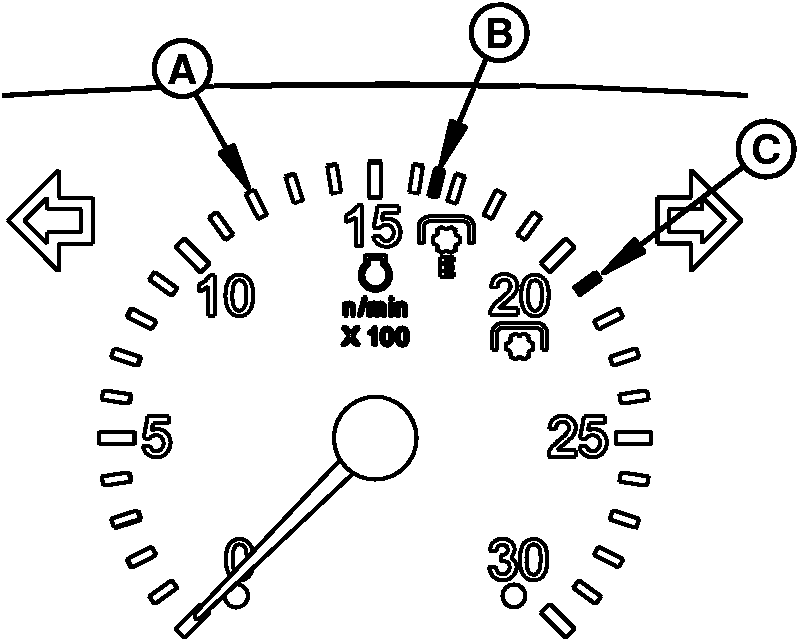Recommended Engine Speeds and Operational Procedures
Warm Up Engine Do not place tractor under full load until it is properly warmed up. 1. Idle engine at 1200-1500 rpm for several minutes.2. Run engine at about 1900 rpm and under light load until engine reaches normal operating condition. NOTE: If hydraulic functions operate slowly, warm the transmission-hydraulic system oil. (Refer to "Warm Transmission-Hydraulic System Oil" in Section 70.) Avoid Idling Engine Allowing engine to idle at low rpm uses fuel inefficiently, and can cause a buildup of carbon in the engine. If tractor must be left with the engine running more than 3 or 4 minutes, minimum engine speed should be 1200 rpm. Observe Engine Work and Idle Speeds 1. Low idle speed:
2. Full throttle speed, at light or no load:
3. Engine (not vehicle) nominal full load speed is 1600-2200 rpm. NOTE: With PTO shift lever in 540E position, engine high idle speed is limited to 1900 rpm. 4. Engine speed at PTO operation: |
|
SH20560,0000167 -19-29DEC08-1/2 |
Restart Stalled Engine If engine stops running due to overload, immediately restart engine. A running engine causes oil and coolant to circulate, which prevents abnormal heat buildup. If engine stalls, but does not stop running due to overload, run at low idle for one or 2 minutes in order to dissipate heat buildup. |
SH20560,0000167 -19-29DEC08-2/2 |
